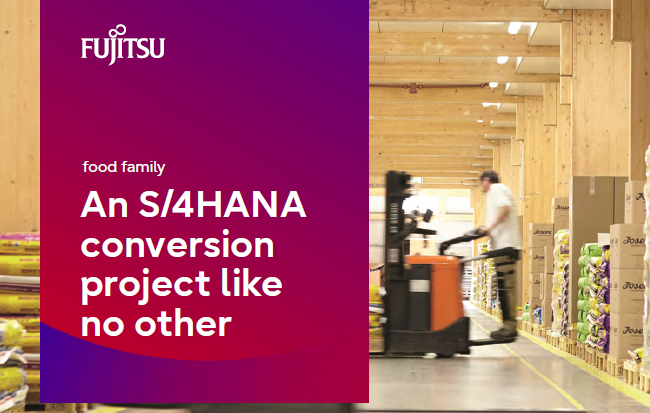What’s changed in profit center accounting with SAP General Ledger?
Profit Center Accounting and the SAP General Ledger
I recently moderated a web forum with Reporting & Analytics 2011 speaker Paul Ovigele on October 13 on changes that have come about with profit center accounting and the SAP General Ledger.
For the full Q&A, you can view the questions and Paul’s responses in the Financials Expert forum or read excerpts from the transcript of the Q&A below.
Forum moderator Gary Byrne, Financials Expert: Welcome to today’s forum, and thank you for joining us today! In this one-hour Forum, we invite you to ask your questions on what’s new in profit center accounting with the current release of SAP General Ledger.
Explore related questions
I’d also like to thank Paul Ovigele for taking questions today. Many of you have already posted your question in the Forum, and Paul will be responding to these shortly with his own posts in the Forum thread.
George Mansfield: Paul, will you be able to include any information on reporting from FAGLFLEXT which has profit centre balances? I’m particularly int
erested in:
1. the key figures linked to the table, (there are many and I’m not sure what they all show)
2. how to report on individual periods (profit centre trend analysis) and especially the opening period.
3. drilldown reporting vs report painter/writer – your views on which is most appropriate for quick profit centre reports. I think there may be a limitation preventing drilldown reporting having a page break for each profit centre.
4. Reporting Profit centre values with sets created from the Financial Statement Variant.
Paul Ovigele: Hi, George,
1. There are several key figures linked to the FAGLFLEXT table. You can go to transaction GR23 and enter library “0FL” and click on the “Basic Key Figures” or “Key Figures” button.
2. You can add the period field as a characteristic when creating a form for drilldown reporting (FGI4) or when creating a report painter report (GRR1)
3. You can report on FAGLFLEXT by using the standard drilldown report S_PL0_86000028, or creating your own custom drilldown (FGI1) or report painter reports (GRR1). If you used classic PCA report painter reports, then you can convert them to New GL reports using transaction FAGL_RMIGR. The advantage of drilldown reporting is the slice-and-dice functionality, which is now needed since there are now various characteristics that exist in the New G/L (segment, profit center, functional area, business area, etc.).
4. Profit Center sets (also known as account groups) can be copied from the financial statement version by using transaction KE5B. This also works with New GL PCA.
Vijay: Paul, will you be covering Intercompany sales, Transfer Pricing, and Profit elimination within the same Profit Centers?
Paul Ovigele: Hi, Vijay, do you have a specific question on this topic? T
ransfer Pricing functionality has not changed that much with New G/L. The accounts that you set up in transaction 0KEK for transfer pricing are automatically transferred to the New GL.
Vijay: Hi, Paul, we sell from US (Parent) to Mexico (Subsidiary) at a markup and book our revenue. Mexico sells to end customers. Mexico holds in inventory until it sells to end customer and books revenue.
1. What’s the best way to identify the amount of Transfer Price? Do we use a different pricing condition and post to a GL account?
2. How do we identify the quantity of stock still with Mexico that we sent?
Paul Ovigele: Hi, Vijay, the answer here is “it depends.” Are you using the standard Transfer Pricing functionality (SPRO – Controlling – Profit Center Accounting – Transfer Prices) or are you using sales conditions to reflect the markup? In either case you would need a condition to reflect the markup and map the condition to the G/L account. However, with TP you need to set up the Currency and Valuation Profile as well as the other necessary config (in the above given menu path) in order to process the eliminations.
You should be able to track the inventory issued to Mexico using one of the inventory transactions (MB51, etc) as there should be a receiving plant or storage location associated with Mexico.
Brian: Can you discuss the various ways and options to achieve full Profit Center reporting in the General Ledger when there are a high number of CO-based allocations?
Based on what I have read from SAP, the Profit Center reports should now be sourced from the General Ledger. One of the areas I am trying to understand is the impact of CO only allocations, especially when there are multiple allocations and the allocations are sourced on sec
ondary cost elements, on Profit Center reporting in the General Ledger. For example, the posting overhead via a cost sheet on labor costs, from CATS using activity types, then running settlement of these costs to a cost center.
My initial thought is this would require additional general ledger accounts in the G/L for posting cross-profit center allocations in CO and still retain the nature of the original secondary cost element account. Also, this would require setting up the CO/FI auto-recon to post an entry when allocations cross profit centers. Otherwise, using a single account would not allow for proper financial reporting.
Paul Ovigele: Hi, you’re right; with transaction OK17 you normally enter just one CO-FI account. You can, however, break this down into different accounts per CO transaction (by clicking on the “Rules” button and flagging the “CO Transactions checkbox”). This will not get you the same granularity as the secondary cost elements, but it will give you a guide as to where the posting came from.
ginajones: Paul, will you answer the question from Brian? We’re interested in the same topic. Thanks.
Paul Ovigele: Hi, Gina, I responded to Brian, so please refer to the appropriate thread to see view my response. A question I would ask you is: what report did you previously use to show the profit center accounts by secondary cost element? Was it a standard or custom report? Reason I ask is that you can migrate your old PCA report painter reports into new G/L using transaction FAGL_RMIGR.
Although PCA is now part of the new G/L, there are still pieces of it that are retained in CO (transfer pricing, PCA substitutions, etc.).
ginajones: We are using standard Profit Center repo
rts (S_ALR_xxxx) which contain the secondary cost movements and using account groups.
Paul Ovigele: Okay, depending on the S_ALR report, it may be based on a report painter or ABAP report. You can check this out by going to transaction SE93 and entering the transaction code and checking the bottom of the screen what the report type is (RW is for report painter).
If it is an “RW” report then you can probably convert it to new GL using FAGL_RMIGR; if not, then you would need to create a custom report.
Kerri Andren: Paul, what tables, if any, are eliminated with the new GL?
Paul Ovigele: Hi, the best way to get this answer is to think about which ledgers have now been combined in the new G/L table FAGLFLEXT. Three that immediately come to mind are:
– General Ledger – Old table GLT0
– Cost of Sales Accounting Ledger – Old Table GLFUNCT
– Profit Center Table – Old Table GLPCT
The above (old) tables and a few others are now part of the new G/L tables FAGLFLEXT (for actual totals), FAGLFLEXA (for actual line items), and FAGLFLEXP (for plan data).
Mayank Malik: Paul, are there any benefits creating the reports (or linking the report library) to table FAGLFLEXT versus FAGLFLEXR?
Paul Ovigele: Hi, Mayank. Definitely. Although there a few canned reports with new G/L, I think you will find that there are not many and may not cover all your reporting requirements. The benefit of creating the custom reports using the new G/L tables is that you can include characteristics that may not be part of the standard new G/L scenarios, and you can (obviously) structure the layout any way that you want.
Drilldown (FGI1) and report painter reports (GRR1) are the most common ERP ones to create yourself. Otherwise, you can creat
e an ABAP report or use the more sophisticated tools such as BI and BO.
Gary Byrne (moderator): Hello, Paul, thanks much for taking time to answer our questions today. I have a question:? ?Is it better to perform document splitting on a profit center or on a segment?
Paul Ovigele: This is a question that I get asked a lot, particularly from clients who are new to SAP. If you have a significant number of profit centers (over a hundred or so), then I would suggest grouping these profit centers into segments and performing document splitting on the segments. However, if you have a few profit centers, then you can perform document splitting on the profit center level (which will in turn split the assigned segment as well).
You want to avoid having the system perform unnecessary document splitting on profit centers that do not really need full balance sheet reporting on. If you have hundreds of profit centers, it does not necessarily mean that you want full balance sheet reporting on each of them. If the profit centers are in significantly different regions or business areas, then they will most likely be represented with a company code, where you will already be able to produce a full balance sheet.
Vijay: Hi, Paul, I thought Segment is a level below Profit Center and would be used for that purpose. What are your thoughts?
Paul Ovigele: No, segment is on higher level than profit center — meaning that you can assign several profit centers to a segment and not the other way around. Do not confuse “Segment” with “Profitability Segment.”
Dave Luther: Hi, Paul. At the end of the month, we do a lot of cash application on customer accounts without reference to a specific invoice. During the transfer to profit center accounting, this results in postings to the dummy profit center, which are then cleared with
a profit center accounting entry.
Is it still possible to post directly to the profit centers only with the new GL?
Paul Ovigele: Absolutely. As long as the field status of the GL account is set to “Optional” or “Suppressed,” you should be able to post to the profit center. In fact, a manual posting to a profit center overrides all the other forms of PCA derivation in new GL (document splitting, substitutions, etc.).
An alternative would be to default a profit center for your cash accounts using transaction FAGL3KEH.
Gary Byrne (moderator): Thanks to all who posted questions and followed the discussion, and thanks again to Paul for joining us today!
A full summary of all the questions will be available in the Financials Forum and in the Financials Group. I encourage you to join the Financials group for ongoing information and additional resources. For more advice from Paul, you can also follow Paul’s blogs and read his recently published SAP PRESS book.
And be sure to meet Paul in person at the upcoming SAPinsider Reporting & Analytics conferenc
e in Las Vegas, November 2-4! Visit the conference website for registration and session details — we look forward to seeing you there!




